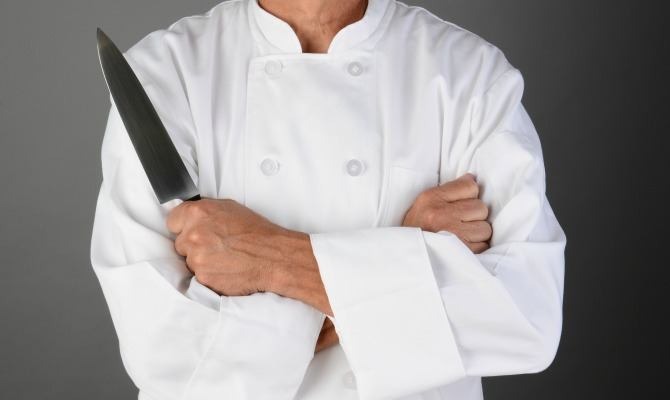A Quick History Of Culinary Apparel
Just as the art of cooking has evolved since the advent of culinary television programming, so too has the traditional "chef whites" uniform in professional kitchens.
When first introduced by Marie-Antoine Carême in the mid-19th century, chef wear was meant primarily as a symbol of respect for accomplished chefs.
But according to Chef Works, the leading global provider of culinary apparel to professionals and home cooks alike, the chef uniform goes well beyond being a status symbol, with each part playing an important role:
Jacket — By far the most iconic part of a chef's attire, the traditional jacket serves a multitude of purposes, beginning with its classic white, double-breasted design. While the white is meant to denote cleanliness in the kitchen and reverence towards the profession, the double-breasted design allows the chef to reverse sides in order to hide stains. From a more practical standpoint, chef jackets are designed to protect against burns from steam, heat, and spills. Today, chef coats are available in a diverse array of styles and colors.
Hats or caps — While the white, 100-fold toque was and is a symbol of status with heights varying according to one's level of experience, headwear actually serves a valuable service in the kitchen as it keeps sweat and hair out of food.
Apron — Often worn at the waist, aprons protect the lower body from burns, spills and stains. When tied in the front, dirty aprons can be changed quickly before meeting with diners.
Pants — In the traditional chef uniform, black or checkered pants are worn as a means of hiding stains, but their primary purpose is to prevent hot foods and liquids from burning the skin. They are also quite durable in order to stand up to everyday wear-and-tear and frequent laundering. Chef pants also usually feature elastic waistbands to make them easier to take on and off.
Chef shoes — Completing the chef outfit is the shoes. Designed to provide support during long periods on one's feet and prevent slips on wet or greasy floors, chef shoes also offer protection from spilt hot liquids and dropped cutlery.
Since its formation in the 1960s, Chef Works has been at the forefront of the culinary apparel marketplace, including the company's introduction of such advancements as its Cool Vent moisture management technology that brought needed comfort and ventilation to traditional chef coats, shirts, pants, and headwear.
Equally, the company's ever-expanding catalog of styles, colors and patterns — including its highly popular Urban Collection — has set the new standard for what back-of-house and front-of-house attire can be. Today, hospitality and food service professionals are not only able to keep themselves safe and clean in the kitchen, but also showcase their personalities and styles through a diverse array of innovative designs, fabrications, and color ways.
